Fremont's Cottonwood
Populus fremontii S. Wats.Fremontís cottonwood is a large, fast-growing tree found along rivers and streams in the southwestern United States and northern Mexico. With heart-shaped leaves that flutter in the wind and cotton-like seeds in summer, itís a classic symbol of riparian (streamside) landscapes.
Native peoples used the tree for food, medicine, and tools. The sweet inner bark could be eaten, while teas made from bark or leaves helped reduce fever and pain. Tribes like the Hopi carved sacred items from the roots, and cottonwood twigs and fibers were woven into baskets, skirts, and cradle padding.
Ecologically, Fremontís cottonwood helps prevent erosion, cools streams, and supports diverse wildlife. Birds, beavers, insects, and deer all rely on cottonwood forests for food and shelter. These trees need regular spring floods or shallow groundwater to reproduce naturally ó something thatís been disrupted by dams, grazing, and development.
Efforts to restore cottonwood habitats focus on re-creating natural conditions and controlling invasive species. Fremontís cottonwood is not only vital to the environment ó itís also a living link to cultural traditions and the natural history of the American West.
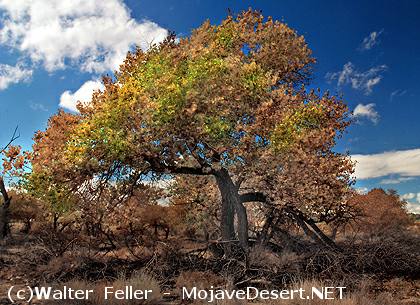
Cottonwood tree along the Mojave River
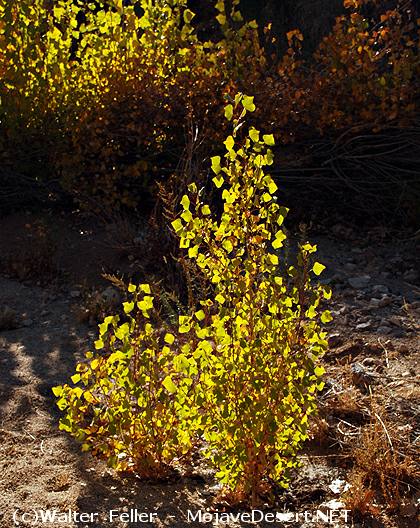
Sapling in wash at Joshua Tree National Park
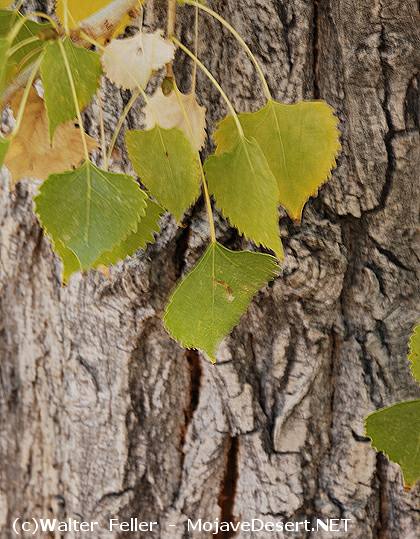
Leaves and bark
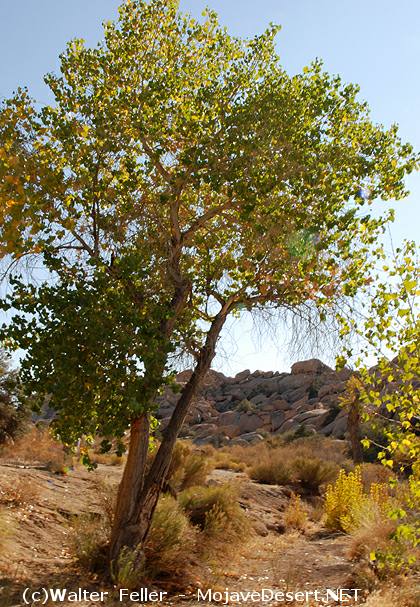
Cottonwood in dry wash
-
Little Autumn
by Walter Feller
-
to sit among the cottonwood trees
and hear the crackle and clatter
from the bright leaves
from the bright leaves
that is all that seems to matter
in the autumn breeze
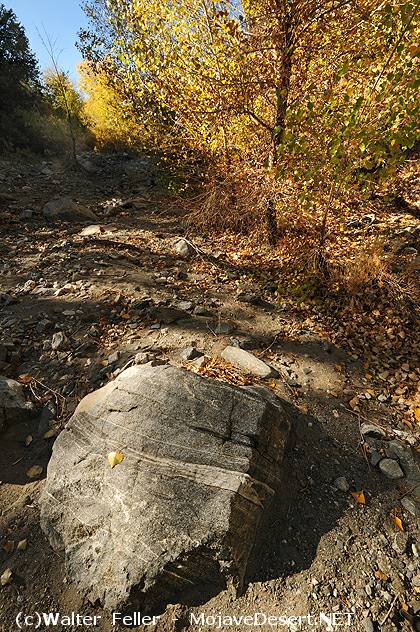
Autumn cottonwoods in Angeles National Forest
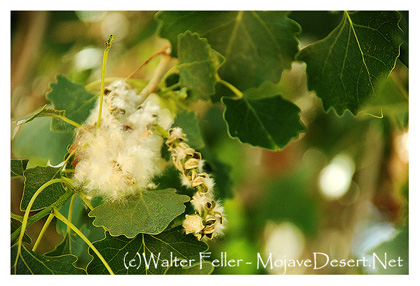 Cottonwood blossom
Cottonwood blossom